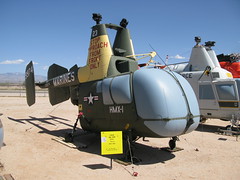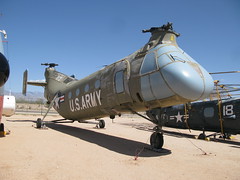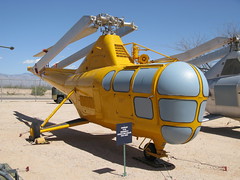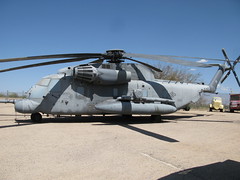Fascination and fear: that sums up my relationship with helicopters. The thought of being able to take off and land vertically, and to hover at will, is entrancing: if I had the money I’d learn to fly one. And then an inner voice speaks up: “What about all those moving parts? One bolt snaps and everything goes to hell.”

When I flew fighters in NATO, we spent hours studying flash cards and slides of Soviet aircraft, including helicopters. The Hook was the big one, akin to our own Skyhook. The Hound had four feet. The Hip had a big butt. No doubt Warsaw Pact pilots used similar mnenomic techniques to identify US and NATO helos.

I flew in helicopters several times during my career, mostly to and from aircraft accident sites, but the ride I remember most vividly was a hop from Nellis AFB in Las Vegas to survey part of the Mercury test site where the United States conducted above-ground nuclear weapons tests during the 1950s: the Department of Energy was opening the overlying airspace to USAF training flights and for some reason we needed to take a close look first. We hovered over the Sedan crater, still hot decades later. The best part of the deal was that I was the senior officer on board and thus got to choose my seat: naturally, I took the empty co-pilot’s seat, with nothing in front of me but a clear plexiglass bubble.
Now that I’ve worked the kinks out of my new knee I’m once again leading walking tours at the Pima Air & Space Museum. I carry my camera on museum days, and when inspiration strikes I take photos of aircraft I might someday write about. Yesterday I wandered over to the outdoor helicopter display, a corner of the museum I don’t normally visit. Here are a few of the more interesting helos on display.
In the top row are two twin-rotor aricraft, the Kaman Husky and the Piasecki Shawnee. The Husky was often called the “egg beater” because of its overlapping rotor design; it was primarily used for rescue. The “flying banana” Shawnee was an Army troop and cargo transport.
In the second row are two versions of the same classic 1950s design, the Sikorski Dragonfly, also primarily used for rescue. You probably remember seeing Mickey Rooney flying a carrier-based Navy version in the movie The Bridges at Toko-Ri.
In the bottom row are two large helos, a USAF Sikorski Pave Low IV and a rarely-seen Army Sikorski Mojave. The Pave Low was a special operations bird; the Mojave an assault transport.
Helicopters are slow and they fly close to the ground, putting them at great risk in combat conditions. They are built as flimsily as possible to save weight. There are enormous stresses on the various shafts connecting engines to transmissions and transmissions to rotors. They contain, as previously noted, a multitude of moving parts, all of them critical.
They’re also fun as hell to fly in.
Hope you enjoyed the photos.





